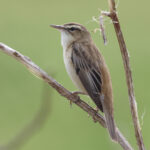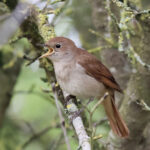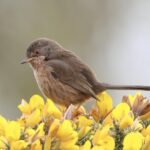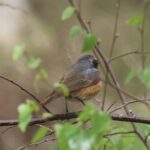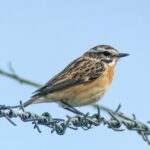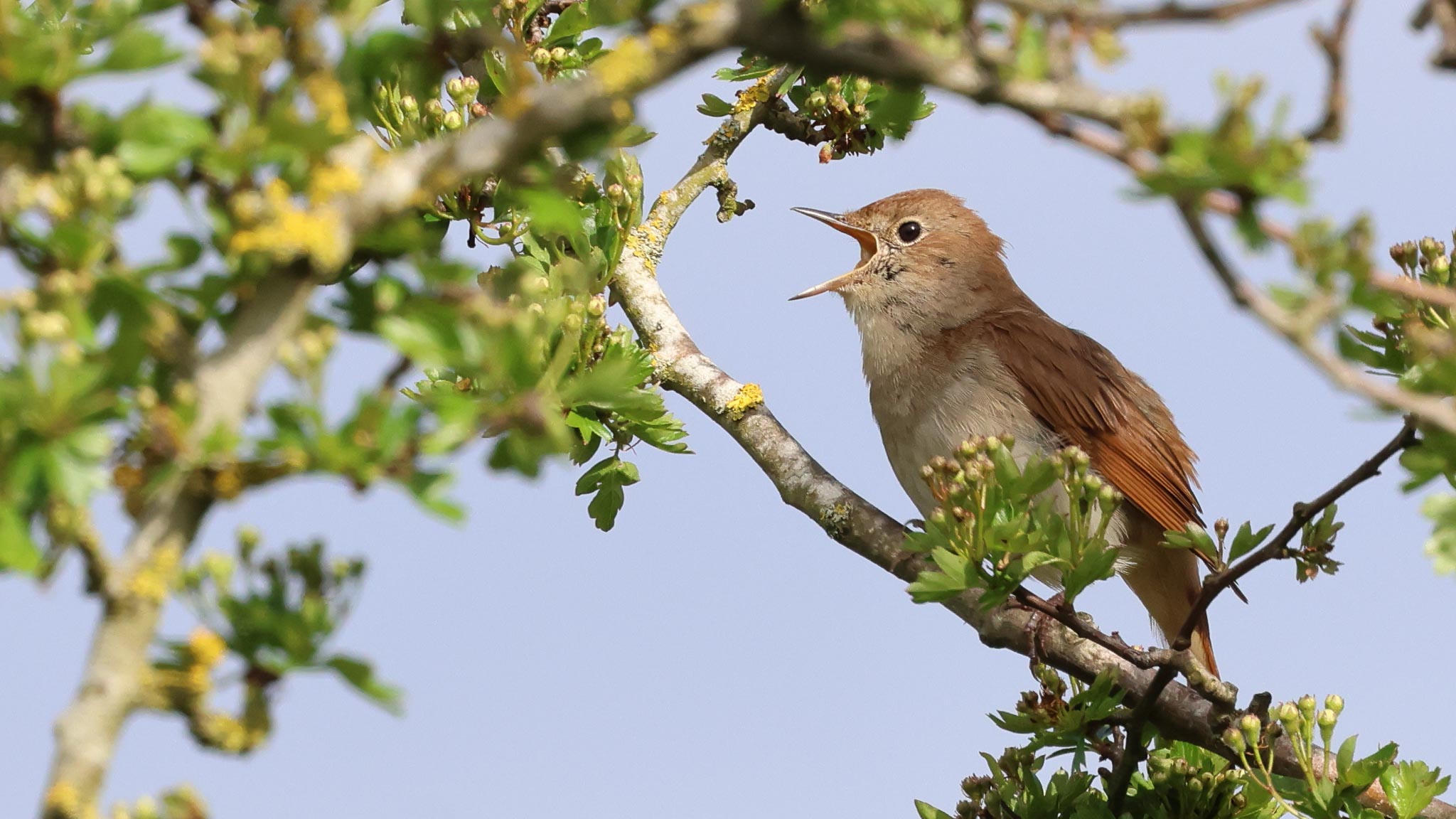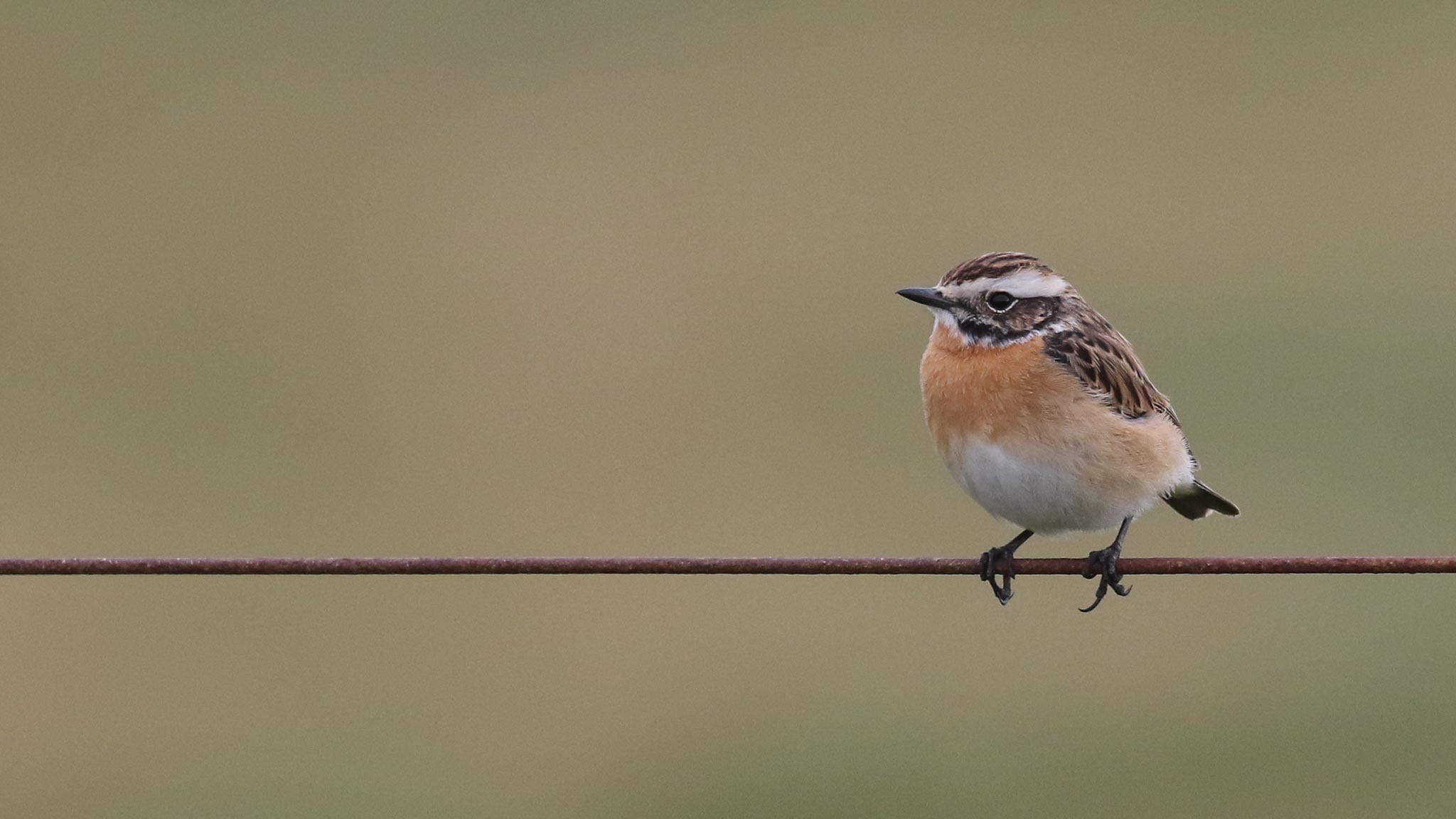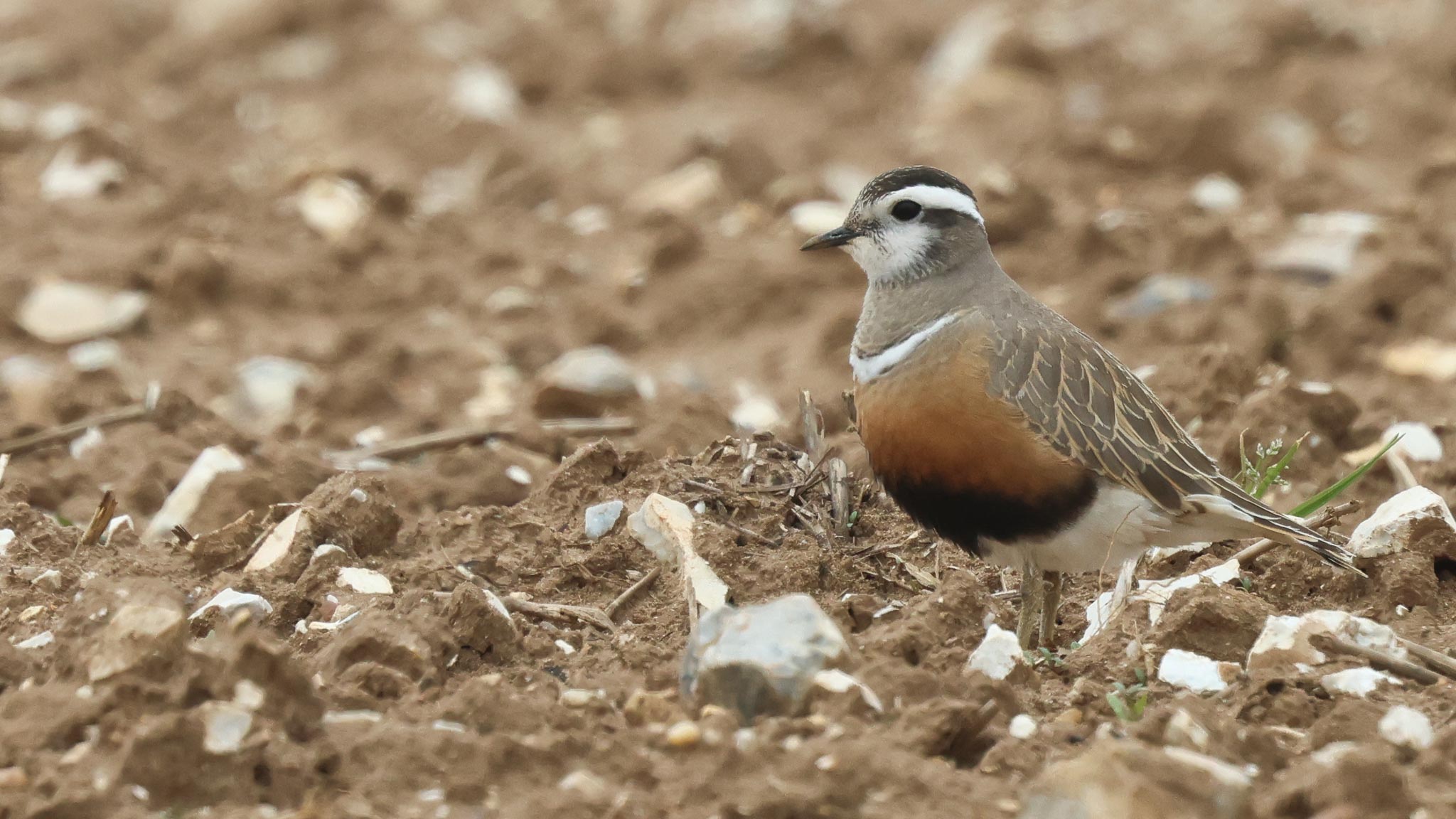A single day tour for Nightingales & Spring in the Fens. It was a frosty start, but with sunshine and blue skies it was a lovely warm spring day to be out.
We headed into the Fens for the morning. As we got out of the minibus, a quick scan of the field opposite revealed just Rooks and Jackdaws today, but we could hear a Nightingale singing further down the road, That was our main target here, so we walked over to see if we could find it. One Nightingale was still singing ahead of us, when we heard another croak and fly out of the tree on the verge right above our heads. It dropped into the brambles below, but disappeared deeper in. We stood and listened to it singing here. What a glorious sound!
Further down, another Nightingale was singing, but from beyond the fence. While we were listening to it, the first started up again back behind us, close to the road. We were going to walk back to see if we could see it, but just at that moment, two dog walkers appeared. As they walked past where the Nightingale was singing, they thought it was funny to make loud ‘cuckooing’ noises. It wasn’t at all funny, and they were completely oblivious to one of the most beautiful songs coming from the bushes next to them. Unfortunately the Nightingale responded by disappearing again.
Now we could hear yet another Nightingale further down on the other side of the road. As we walked on, it flicked up into the bushes next to us briefly, but dropped again. Three people with binoculars were coming the other way, and stopped and looked out. We thought at first the Nightingale had landed in front of them, but it was actually a Stone Curlew in the field further back! Unfortunately there was only a narrow gap in the bushes through which we could see it and it disappeared from view before everyone could get onto it.
The first Nightingale had started up again back in the bush up the road. This time, as we walked up slowly to try to get a look, the other birders walked up past us and the bird dropped deeper in. It was beautiful just listening to them all here, but we were really hoping to get a good look at one. We were not having much luck getting one to perch out in view this morning!
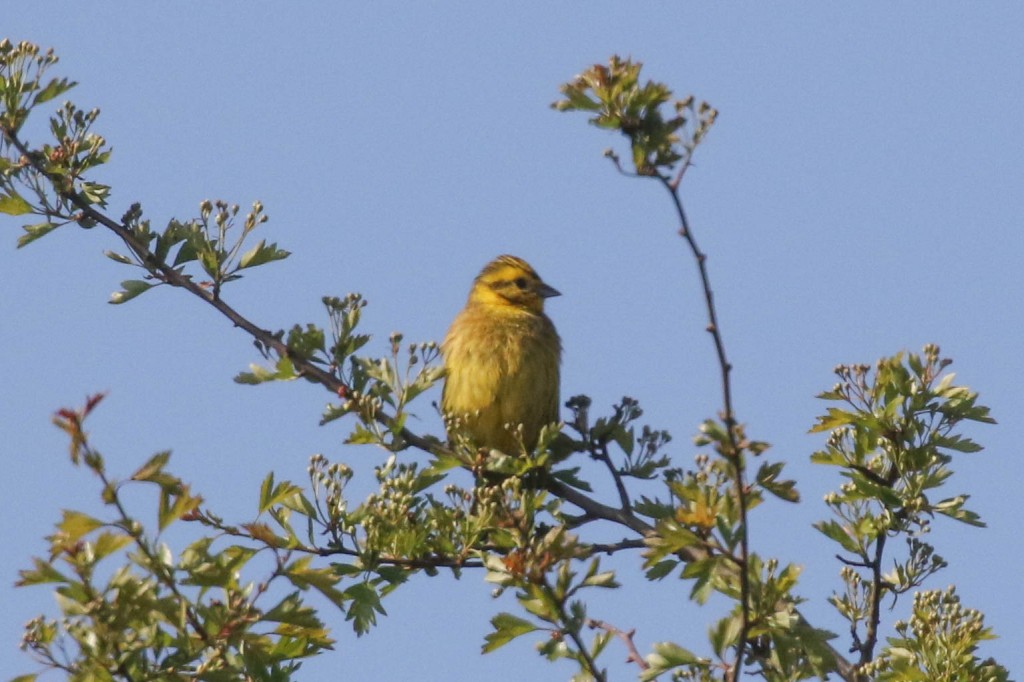
We decided to try our luck up a footpath which winds up through the bushes. Yet another Nightingale was singing in a hawthorn right by the path but was well hidden and went quiet as we approached. We walked out into a more open area at the top and stopped to see if we could see it looking back from the other side. A smart Yellowhammer perched up in the top of a large hawthorn in the sunshine behind us.
Now a Nightingale flew across the path ahead of us and started singing in a small thicket out of view. We stood and listened to it for a minute or so and then it flew back across the path and landed in the top of one of the hawthorns. It started singing and even better it stayed there – great views now out in the open, through the scopes. Just reward for all our efforts!
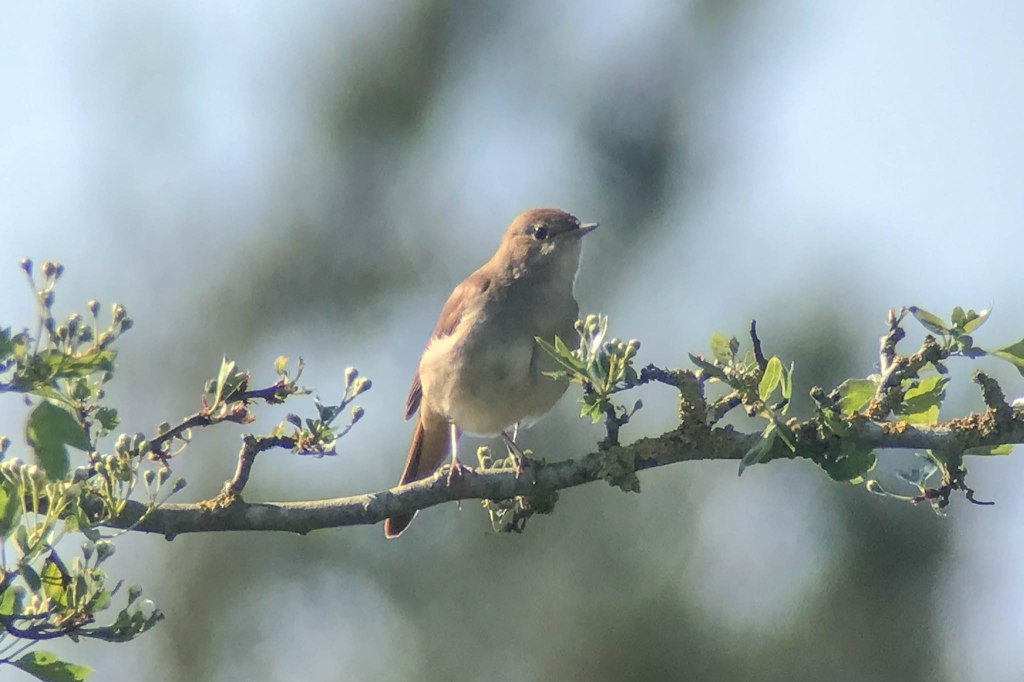
We had lost count of how many Nightingales we could hear, but now we could relax a little and take it all in, having finally got onto one. We walked back down through the bushes to see if we could find the Stone Curlew again. We scanned the field, but there was still no further sign, just several Brown Hares. There were lots of warblers back in the bushes – Willow Warblers and Chiffchaffs, Common Whitethroats and Blackcaps.
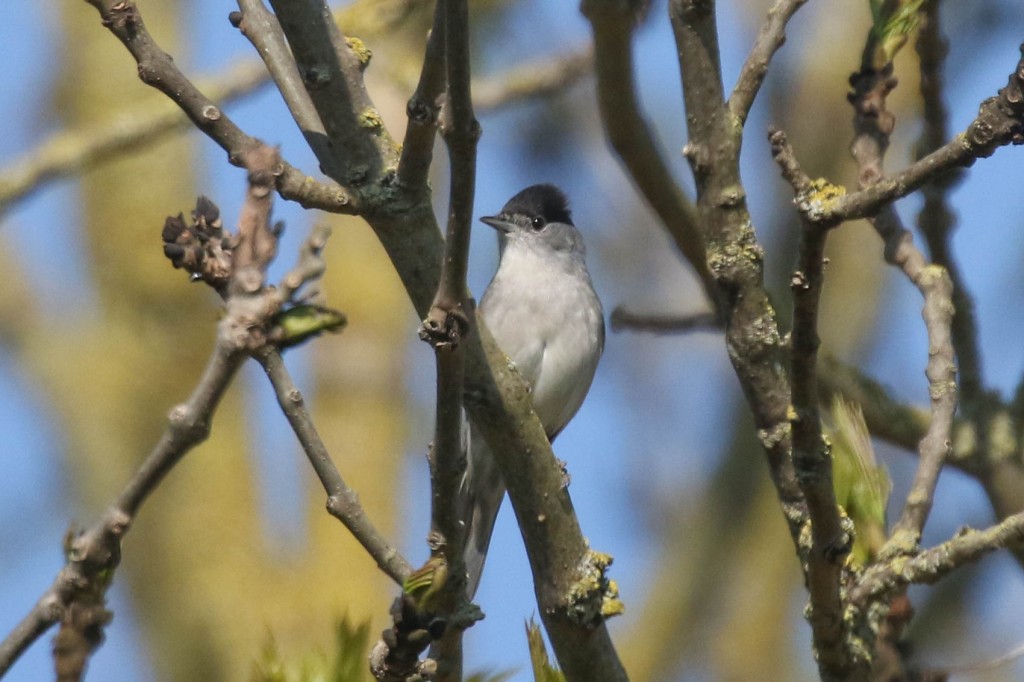
Back up the road, one of the Nightingales was still singing beyond the fence on one side but another flicked up out of the bracken ahead of us, with a flash of its bright orange-red tail. It disappeared into a bush but we stopped and waited. A Wren kept coming in and out instead at first.
Then the Nightingale dropped back down into the bracken close by. It disappeared in but then came back out right into the open with a large leaf in its bill. It perched on the bracken, flicking its wing and fanning its tail. Wow! We stopped to watch, fascinated. Several times, it disappeared down into the bracken and came back out with its leaf. Presumably we were witnessing it selecting a nest site – what a privilege to see.
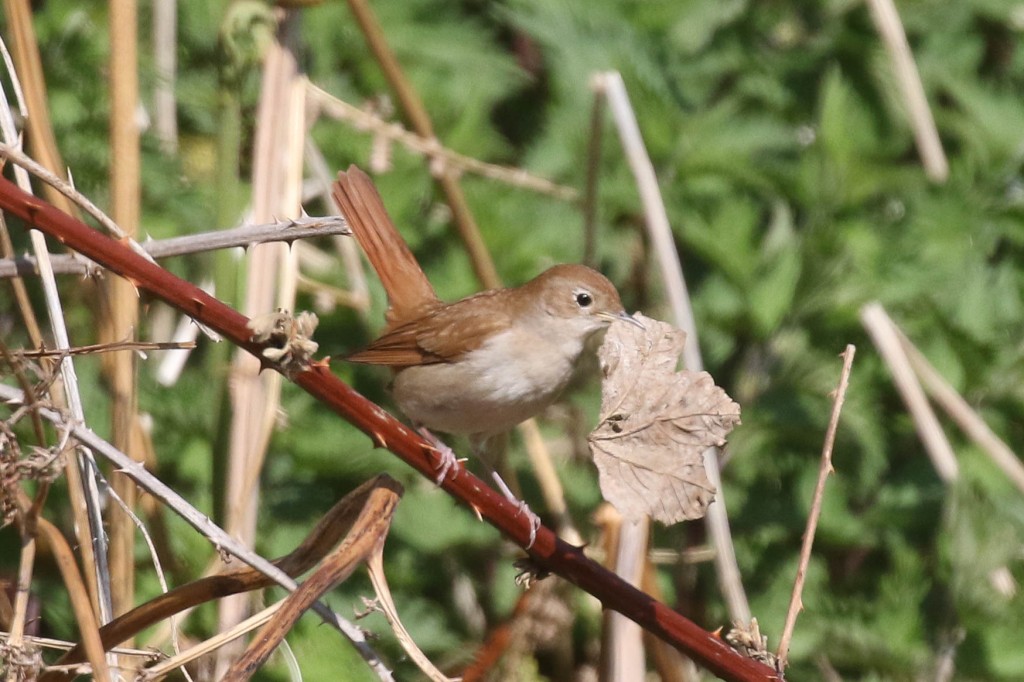
Our perseverance had paid off and we had been treated to some stunning view of Nightingales now. We walked back round and up the footpath again. The Nightingale we had seen earlier, perched up on the hawthorn, was singing from dense cover again now, but we stopped to listen to it again. At one point it built itself up with a lovely series of rising whistles.
We walked on further. A Garden Warbler started singing now. We could just see it flicking around in the edge of a hawthorn, before it flew further back. We stopped to listen to a mixed singing Willow Warbler, starting with bits of Chiffchaff song, before breaking into the familiar sweet descending scale. It was mid-morning already, and the Nightingales were going a bit quieter now, so we made our way back to the minibus.
Our next destination was the RSPB reserve at Lakenheath Fen. After checking in at the visitor centre and using the facilities, we had time for a look over the river at Hockwold Washes before lunch. As we walked out along the path, a Reed Warbler was singing from the ditch and we could just see it flitting around low in the reeds in the bottom. A Cetti’s Warbler shouted at us as we passed.
From up on the riverbank, we scanned through the ducks out on the Washes first. There were lots of Teal, but we quickly located three Garganey in with them, including two smart drakes. They were all asleep at first, but we could still see the bright white stripes on their heads in the sunshine. One of the drake Garganey did then wake up and swam round, so we could get a better look at it. It has been a very good spring for Garganey here this year. There were a few Shoveler, Gadwall and Mallard too.
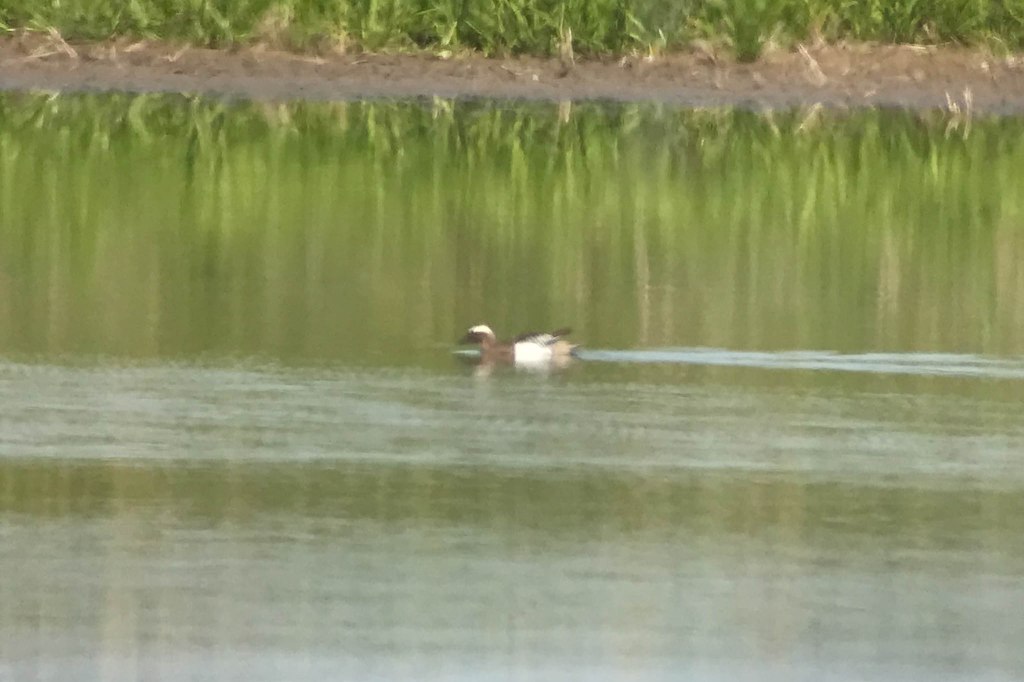
Three Wood Sandpipers were feeding in the shallow water in front of the mud over the far side. They were rather distant and we had planned to walk up the riverbank for a closer look, but then two of them flew in and landed on the near edge of the Washes in front of us, so we could see their bright supercilia and spangled upperparts.
An elegant Greenshank was feeding in the water here too and there was a nice selection of other waders – lots of Avocets, Lapwings, a pair of Oystercatchers, four Black-tailed Godwits, and Redshanks. One of the group found a tiny Common Sandpiper right at the back, which was a challenge to see in the heathaze!
A Cuckoo was calling way off in the distance when we arrived, but seemed to gradually make its way closer. We could hear it much better now and figured it must be in East Wood, but with lots of leaves on the poplars now it was impossible to see. While we were scanning the trees, hoping we might get lucky, someone noticed two Common Cranes appear above the trees, circling. They were a long way off, but we had a good look through the scopes. A very nice bonus!
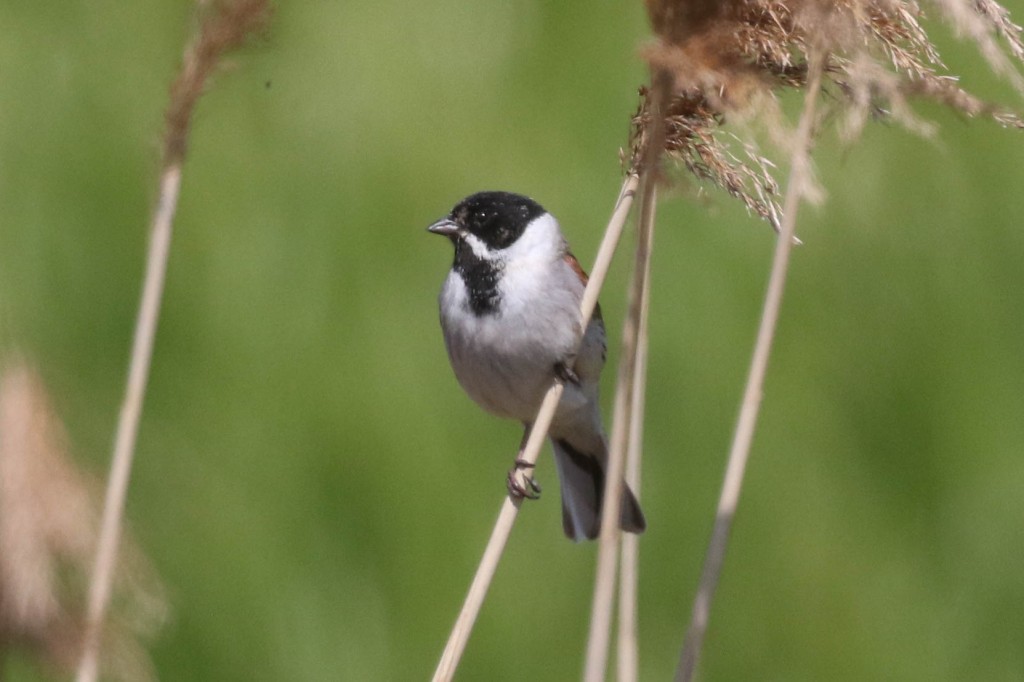
Several Reed Buntings flicked in and out of the reeds in front of us and swung precariously on the seedheads. Having arrived a couple of weeks earlier, the Sedge Warblers were less vocal today than the Reed Warblers but we did have nice views of a pair in the reeds right below viewpoint. A Stonechat appeared briefly by the river further down.
It was a very productive hour at the Washland Viewpoint, and now we made our way back to the Visitor Centre for lunch. There were lots of St Mark’s Flies out, swarming around the bushes in the picnic area, but thankfully they left us alone on the tables. A Hobby appeared just behind us, hawking back and forth for flies up in the blue sky. Someone was enjoying the St Mark’s Flies!
After lunch, we walked out onto the track to the main part of the reserve. It was warm in the lee of the trees, and quieter now. When we got to New Fen viewpoint, we could hear a Bittern booming from the reeds. A single drake Gadwall and a couple of Coot were on the pool. Several Kestrels were hovering out over the river bank beyond. A Cuckoo was calling in Trial Wood.
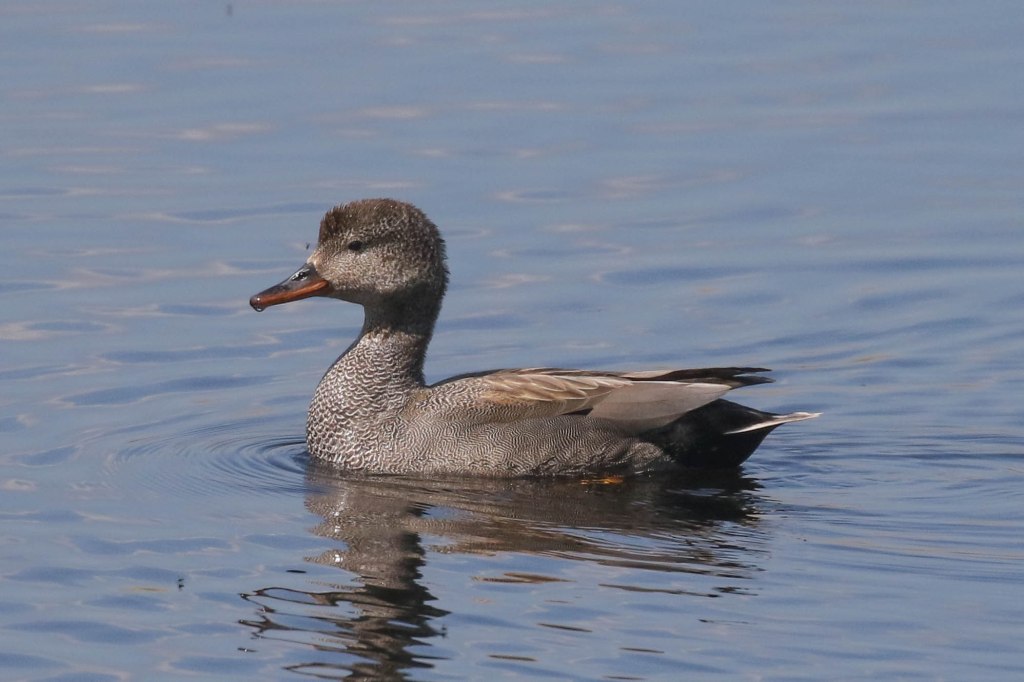
A male Bearded Tit appeared low down in the reeds along the edge of the pool. It disappeared in, then flew out and across the water to the island of reeds in the middle. A few seconds later, it was off again and landed in the reeds at the back where it spent a couple of seconds flycatching.
As we walked on along the main path, a couple of Hobbys appeared over the reeds. One Hobby was very high in the sky, but the other came much lower overhead, giving us lovely views, zooming back and forth catching and eating flies on the wing.
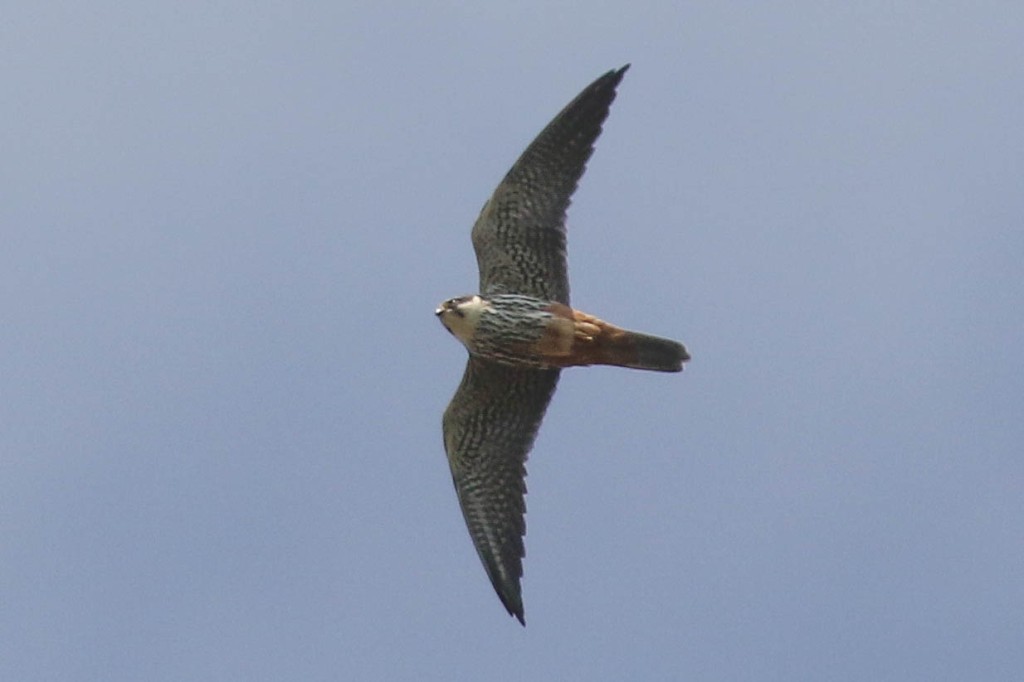
We had a quick look over the reedbed from the bank just before West Wood. There were a few Tufted Ducks on the water and a Little Egret flew up and away over the reeds. Then we took the path on alongside West Wood. There were lots of freshly emerged Azure Damselflies here in the vegetation by the path and a single Large Red Damselfly. Another Cuckoo was calling from deep in the trees in West Wood.
A little further on, we noticed some movement in the reeds right by the path ahead of us. We stopped and could hear louder rustling now, and see the reeds moving – something large was obviously trying to walk away from us through the thick vegetation. We stopped and watched as a Bittern climbed up out of the reeds, just a few metres in front of us. It stood for a second watching us, then flew off over the reeds, giving us a nice longer view as it circled round before dropping in again further up.
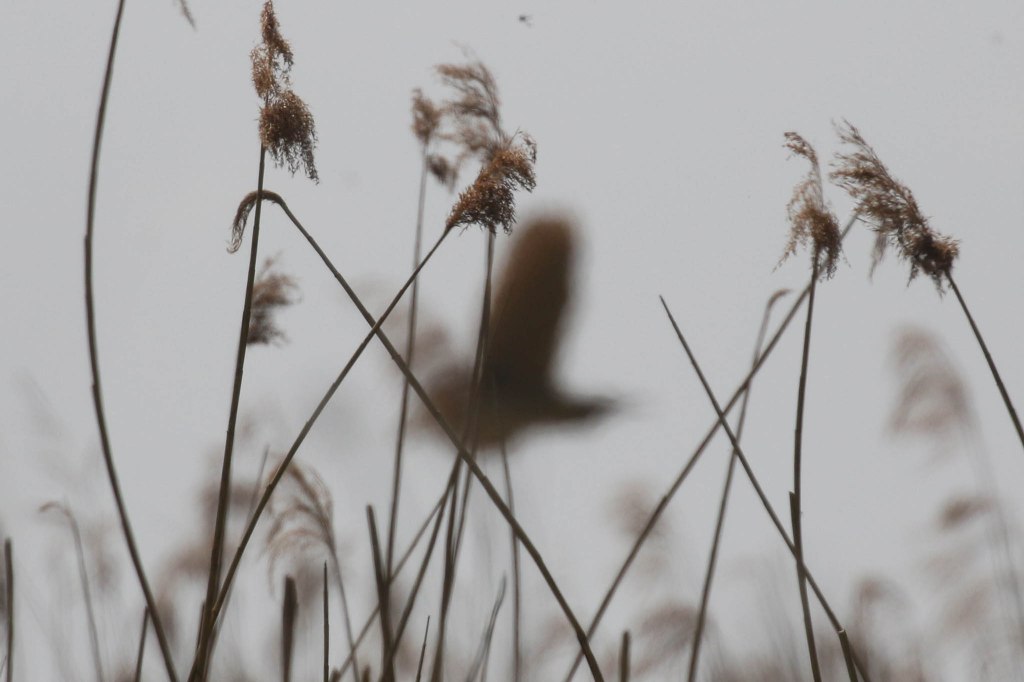
Continuing on to Joist Fen viewpoint, there were lots more Hobbys up here, at least 10, but they were all rather distant so we were pleased we had seen the one over New Fen earlier. There were several Marsh Harriers up too. A Bittern made a brief couple of flights over the reeds further back, and we could hear another booming from somewhere behind us.
Two Yellow Wagtails dropped in, and disappeared in the cut reeds out in the middle. Scanning where they had landed, we picked up several Common Snipe and Redshanks feeding in the mud. Eventually the Yellow Wagtails reappeared briefly, but they still hard to see. The Greylags here had several broods of goslings.
As we walked back, several Hairy Dragonflies flew over the path now, our first dragonflies of the year. The Cuckoo was still singing in West Wood, taunting us tantalisingly out of view and another was now back in East Wood, but still too far in to stand a chance of seeing it. A Stonechat was perched on the fence by the railway as we passed.
After a stop to get a welcome cold drink in the Visitor Centre, we made our way back to Weeting. We made our way straight down to West Hide, where the position of the nest camera focused on it immediately gave away where the Stone Curlew was sitting, in the cultivated plot not too far out from the hide. We had a good view of the sitting bird in the scopes. The eggs were due to hatch any day (postscript – they hatched the following day!).
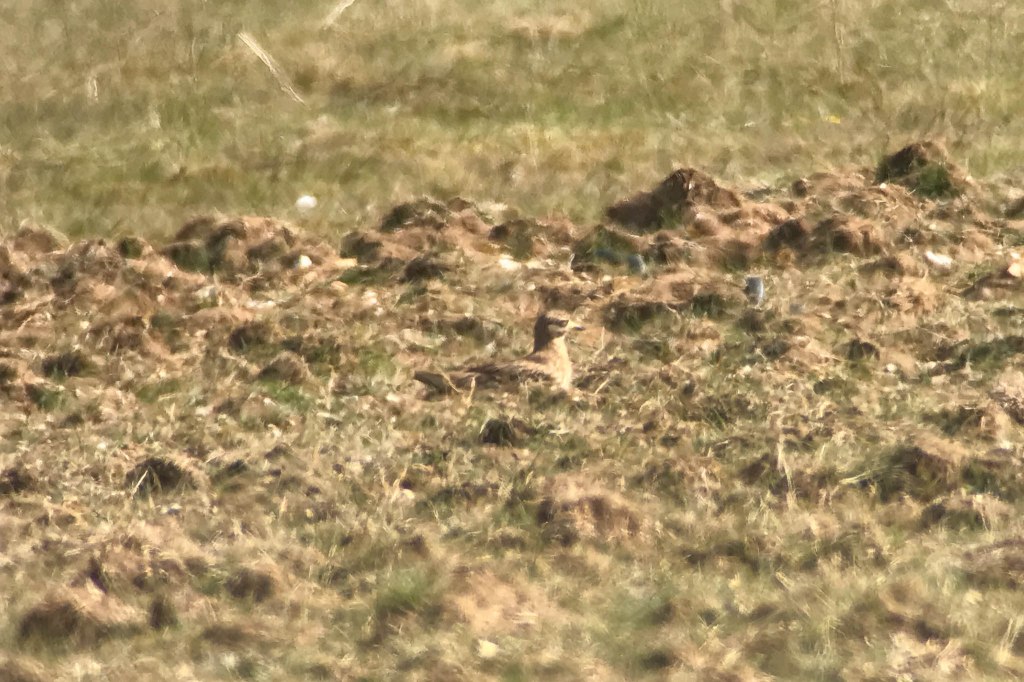
There were several Lapwings and a Skylark in the cultivated plot too. One of the group picked up a small bird on the grass much further back. It was hard to see, almost over the ridge and in the heat haze, but we could just about make out it was a Wheatear. Thankfully, it did eventually come out a little bit more into the open.
Back at the Visitor Centre, the warden had a nice surprise for us, a rare moth or more correctly a moth larva. He had found a tiny Shining Bagworm (Bacotia claustrella) larva in its larval case, constructed from lichen fragments, feeding on a lichen encrusted twig and looking just like a bit of the twig! A slightly bizarre bit of wildlife to end on – but we had enjoyed a wonderful day filled with birds and it was time to head for home now and let them close up the reserve.
